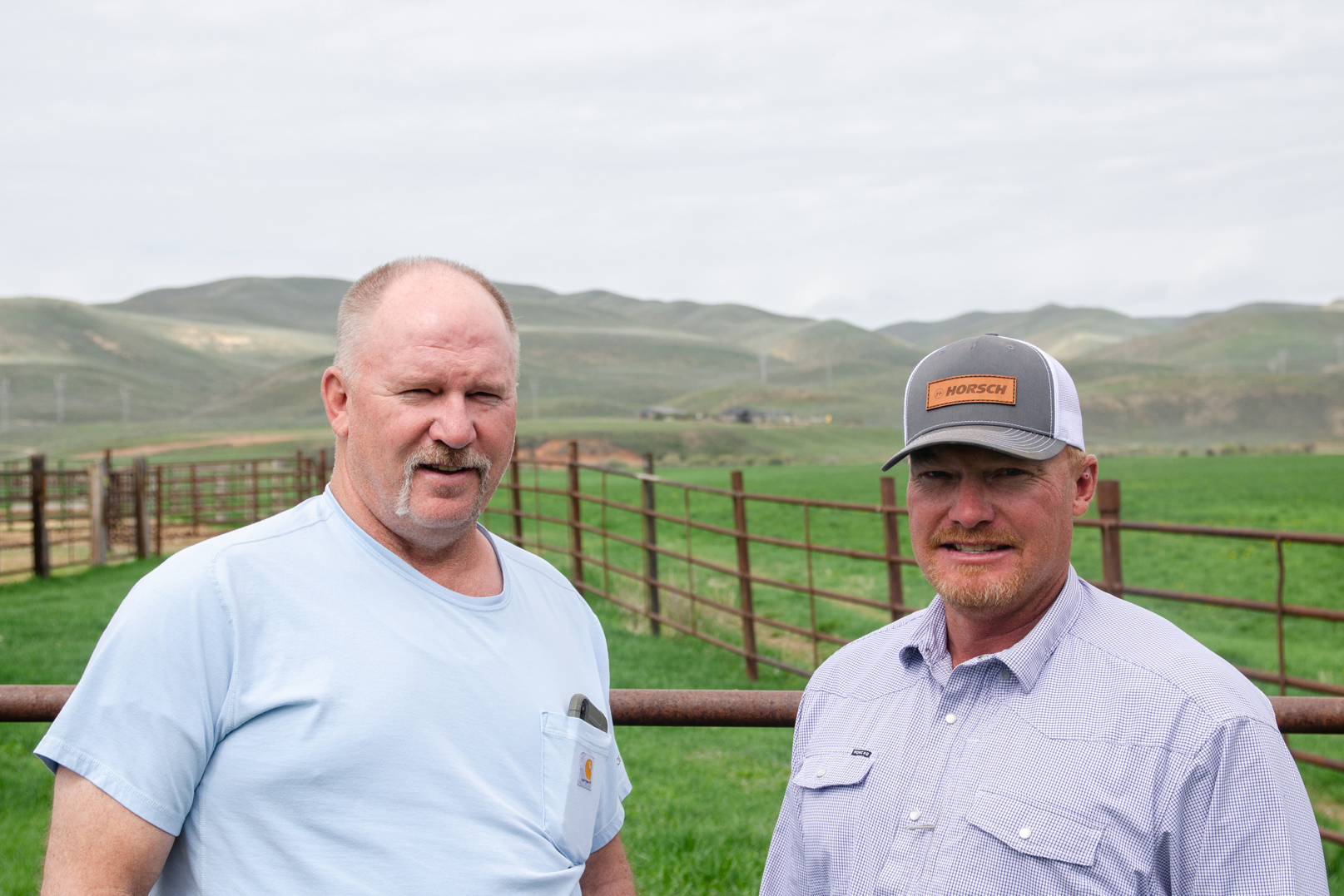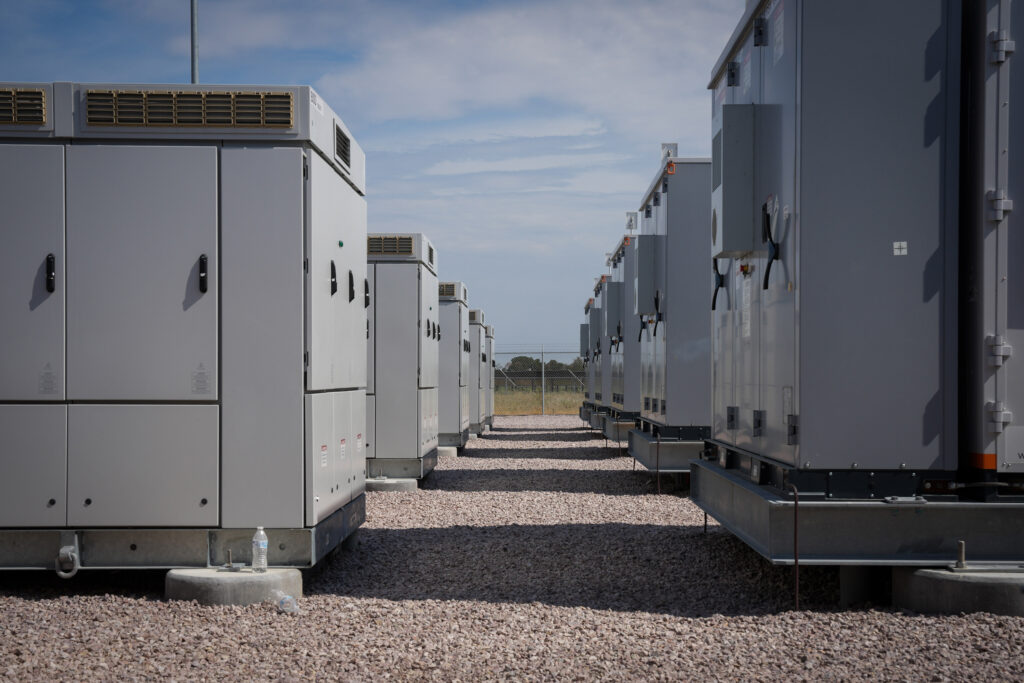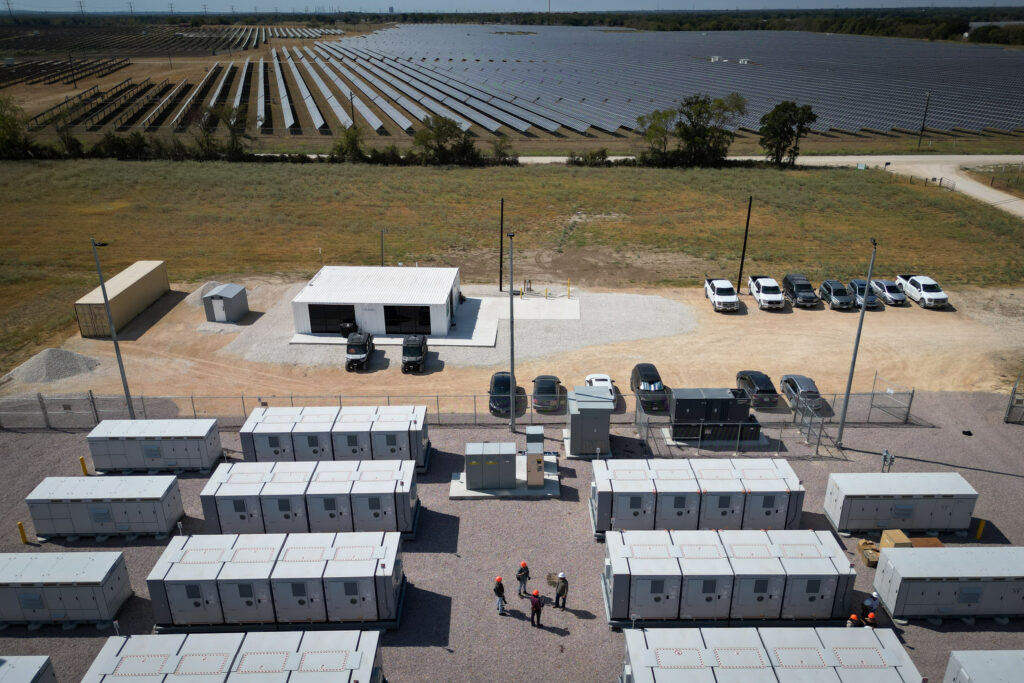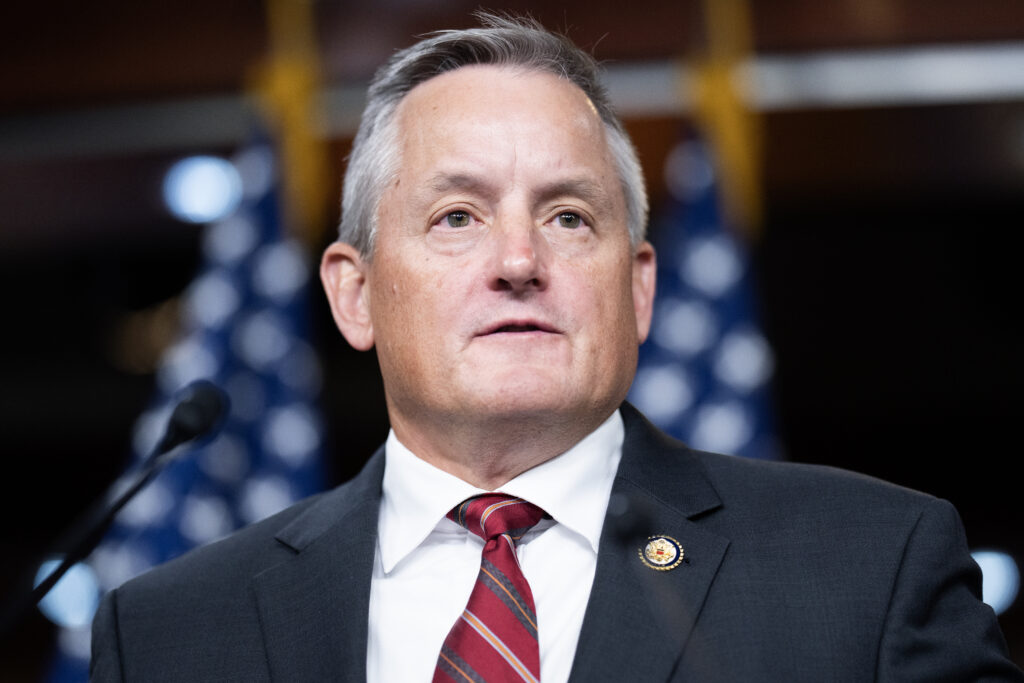ELK RIVER, Minnesota—Here in a Trump-friendly county, Terry Berg would like to sell you an electric car.
He is the top salesperson at Cornerstone Ford, having sold cars and trucks at this dealership since 1987.
If you step into his office and show even the slightest interest in an EV, he will paint you a picture of the benefits. He explains, in a methodical manner, how he enjoys the strong acceleration, how his personal EV has enough range to get him to his lake cabin and how a combination of rooftop solar and an EV means his fuel costs are zero.
“I can go to the cabin for free,” he said. “I don’t see how you lose on that. I don’t see the downside.”

But he often runs into resistance. In this community, he must surmount the idea that EVs are only for Democrats and are unreliable.
Buying a car doesn’t have to be a political act. But many car dealers and salespeople have been swept up by cultural currents that make almost everything political, where buyers in liberal-leaning areas are more likely to consider an EV, and such a prospect is near-unthinkable in conservative-leaning areas.
Inside Climate News visited two dealerships near Minneapolis-St. Paul last month to learn what it’s like to sell EVs at a time of intense polarization. Cornerstone Ford in Elk River is on the outer edge of the metro area in a county that Donald Trump carried in 2020 by 33 percentage points, while Luther Westside Volkswagen is in St. Louis Park, a first-ring suburb in a county that President Joe Biden carried by 43 percentage points.
People selling cars at both dealerships are enthusiastic about EVs, but it’s much easier in St. Louis Park, which has some of the highest EV ownership rates in the state.
Despite the differences, the salespeople have similar outlooks. They expect the partisan heat surrounding EVs to fade as the cars get better and more affordable. But they worry political differences can do damage in the short term, and the country will be sluggish in realizing the benefits of the shift to electric transportation.
The biggest advantage of an EV isn’t about economics or the environment, said Joe Fifield, a salesperson at Luther Westside who specializes in EVs. It’s about comfort. This includes the smoothness of the drive and the way you can set an EV to automatically warm up in the garage on a sub-zero day so it’s like a warm blanket when you get behind the wheel.
“It’s this quality of life thing,” he said.


But as eager as Berg and Fifield are about EVs, they are not typical for an automotive retail industry that includes trade organizations, dealership owners and salespeople who view a rapid shift to EVs as bad for business.
The National Association of Automobile Dealers was among the groups that successfully lobbied the Biden administration to ease pollution rules finalized last week that are meant to hasten the adoption of EVs. The NADA and many of its members are major political donors and strongly favor Republicans.
Automakers also can hinder progress, as happened with delays in the rollout of the highly anticipated Ford F-150 Lightning.
A larger point, according to Berg, is that the pace of the shift to EVs will depend on the extent to which car salespeople learn to love the vehicles and help the public to love them too.
EV Evangelism
On an unseasonably warm Wednesday in February, none of Berg’s customers expressed enough of an interest in an EV to the point that he put them behind the wheel for a test drive. The closest he came was with a longtime client, a retired woman, who was looking to replace an old SUV.
She said an EV probably wouldn’t work for her because the parking area at her lake cabin didn’t have access to electricity.
Berg suggested she could have an outlet installed.
“That sounds like an awful expense,” she said.
Without a pause, he shifted to focus on options that run on gasoline.
Berg’s demeanor with customers isn’t like that of a pal. He doesn’t tell jokes. He comes across as a trusted expert, like a dentist who has known a patient for decades.
He grew up in St. Francis, a small city near Elk River. In high school, he got a job at the Ford dealership, doing cleanup in the service department.
After graduation, he went to the dealership’s general manager and said, “I want to sell.” The manager said Berg was too young. For about two years, Berg continued to ask to be put on the sales floor, and his boss eventually relented.


He credits that supervisor for having a simple and effective training method. For two weeks, Berg’s assignment was to sit at the main desk on the sales floor, watch and listen. He saw which salespeople were effective and which were not, and why.
From this, he learned the importance of being truthful and trusted, even if that didn’t lead to a sale in the moment. His goal wasn’t just to sell you a car or truck that day. It was to sell you vehicles for the rest of your life, and to sell to all of your friends and family.
He soon met his future wife, the sister of the dealership’s receptionist, through work. They have two grown children.
After decades of building his base of clients, he now sells more vehicles than anybody, and his customers are almost all people he knows or have connections with people he knows. He is so busy with his existing customers that he almost never sells to walk-ins.
His long list of clients puts him in a position to be an effective evangelist for EVs, but he has found that most of his customers have a resistance to going electric.
A Failed Experiment?
In the middle of the day, Berg walked back to the parts counter to talk about an order with his colleague, Kelly Krogh. She had a pin on her shirt with “MAGA” spelled out in fake diamonds, the abbreviation for Trump’s slogan, “Make America Great Again.”


She views EVs as a failed experiment that will fade over time, specifying that this is her personal opinion and not that of the dealership. One of her concerns is that EVs are an environmental hazard because of the damage caused by mining for battery materials. (A large body of research has found that gasoline vehicles are much more harmful to the environment than EVs on a lifecycle basis.)
“Terry’s sold on them,” she said. “I love Terry. Me and him get along really well at work.” But they have learned it’s not productive for them to discuss their views on EVs.
Negative sentiment about EVs permeates in Elk River to such an extent that Berg can’t narrow it down to just one or two reasons.
He guesses that some of the anti-EV messages come from cable news and partisan media stories that highlight concerns about the vehicles not having enough range or the environmental hazards of some battery materials. He sees the same kinds of stories on local television news, like a report on the local NBC affiliate that asked, “Is your electric vehicle lying to you?”
He doesn’t cite Donald Trump as a source of anti-EV views. Trump has made criticism of EVs a regular part of stump speeches, warning that a shift to electric transportation is contrary to what consumers want and would wreck the U.S. auto industry.
Berg limits his EV pitches to people he views as persuadable.
“You can tell right away,” he said.
He can sense what customers are likely to want before they say a word, based on their body language and their vehicle history. It’s an innate feeling that he can’t explain.
He guesses that a large majority of his customers are not ready to consider an EV. So what will it take to convince these customers?
He foresees a future for EVs that goes like this: The vehicles will become more visible in neighborhoods and parking lots. Everyone will have a friend or family member who has an EV, and, based on the quality of the vehicles, most of these people will act as ambassadors for the technology. At the same time, the variety of vehicles will continue to rise and the price points will fall relative to gasoline models. EVs will grow in market share to become the default product.
But he’s not sure how long it will take.
The Future of the Car Business
At least one person at the Cornerstone family of dealerships believes in EVs as much as Berg does: the CEO.
Rob Powell is the third-generation co-owner of Cornerstone Auto, a company that sells a variety of new and used car brands at four locations in three cities. He came back to the family business in 2012 after spending much of his 20s working on clean energy and energy efficiency consulting and advocacy. He took over as Cornerstone’s president and CEO in 2022, when his father stepped away from day-to-day management.
As CEO, Powell has emphasized the idea that EVs are the future of the car business and Cornerstone needs to position itself to be a leader. He participates in EV ride-and-drive events with regional nonprofits, and is eager to show up at community events to talk about the virtues of electric transportation.


Around lunchtime on Wednesday, Powell stopped by Berg’s office to say hello.
He happened to arrive when Berg was answering a reporter’s question about whether Ford had been effective with its introduction of the F-150 Lightning in 2021 and 2022.
Both men viewed the Lightning’s launch as a series of mishaps by Ford, and it was clear that they had commiserated about this many times before, almost like a support group.
Ford introduced the model in 2021 with an event in Dearborn, Michigan, that featured fog machines and throbbing music. The company said the truck would have a base price of $39,974, a range of 230 miles and an on-sale date in spring of 2022. By December of 2021, Ford said it had more than 200,000 reservations for the vehicle and the excitement among dealers and customers was palpable.
But the company didn’t produce the trucks fast enough, hindered by difficulty obtaining parts and issues with tuning up the manufacturing process. By the end of 2022, Ford had sold just 15,617 of the model.
“They didn’t match initial demand with supply at all, and people’s interest just waned,” Powell said.
Ford also changed the Lightning’s price several times, making it more expensive when the model was scarce and later cutting the price. This irked some of the people who had bought early.
But none of those early challenges were as bad as the backlash that hit in 2023 when many customers realized cold weather led to a major drop in battery range.
Behind the scenes, Ford did a poor job of encouraging its stores to sell the Lightning, according to Berg. The main problem was that Ford set the invoice price, which is like a wholesale price, so close to the suggested retail price that it left little profit.
Since a large share of salespeople are paid based on the profit of a transaction, the result was that the sales force could make much more money by steering customers away from the Lightning and toward a gasoline F-150. Berg wrote down two examples to illustrate the point, showing how a sale of a Lightning would pay him about $500, while a sale of a gasoline F-150 with a similar retail price would pay him about $1,250.
“The people that are selling your product have to be paid,” he said.
Contacted for a response, Ford spokesman Martin Gunsberg said the company has changed the invoice structure for EVs in recent weeks to make it more like that of gasoline or diesel models. He also noted that its dealers are independent businesses that can decide how to compensate sales staff.
As for the changes in pricing for EVs, he said, “Ford adjusts pricing and incentives to align with customer demand and changes in the market, as it always has. The recent re-pricing announcements resulted in price reductions for some of our EVs. We believe this keeps Ford competitive. We posted record EV sales in 2023 and we are running at a record rate through February of this year with EV sales up 26 percent.”
Berg praised Ford for the recent change of invoice prices on the Lightning, which he thinks will help to motivate the people selling the vehicles.
Despite his criticism of Ford’s past actions, he has never wavered in his belief that the Lightning is a strong product, and this makes him optimistic that Ford can turn it into a sales success.
“It’s a great truck,” he said. “You drive it and you fall in love with it.”
Another reason for his optimism is that Ford is making improvements to the 2024 model year Lightning to address customer concerns. For example, the model will have a heat pump in all versions, which is a more efficient heating system than what was in some versions in prior model years, and should reduce range loss in cold weather.
Powell shares this optimism, but he also is glad his company sells enough brands that there is a good chance several of them will become EV leaders. Right now, Kia is looking pretty good, and Cornerstone Kia is across the street from the Ford dealership.
Berg is familiar with Kia’s virtues. His personal vehicle is a Kia EV6, a compact crossover that runs on electricity.
“Kia is doing a really good job,” he said, drawing out the word “really” for an extra beat.
‘Simply Not Ready’
Powell would like to avoid discussions of politics as it relates to car sales. He said his company is “politically agnostic” and serves customers from across the spectrum.
But automotive retail as an industry is active in politics and has a strong partisan lean toward Republicans, according to OpenSecrets.org. Auto dealers donate more to political campaigns than any other group in the auto industry, including auto manufacturers.


The largest donor is the National Automobile Dealers Association, which has long argued to slow down requirements that cars become more fuel efficient. Lately, this advocacy took aim at the Biden administration’s most important executive action on climate: tailpipe pollution rules designed to spur the switch to electric passenger cars and trucks. The administration released a final rule last week that slows down the timeline for the shift to EVs, in response in part to pressure from the dealers’ group. The administration now projects 30 to 56 percent new vehicle sales for purely battery-driven cars by 2032, instead of two-thirds of sales, as under a previous version of the proposal.
In addition to NADA, a group calling itself EV Voice of the Customer, which includes the owners of about one-fourth of the country’s new car franchises, has sent letters to President Joe Biden urging him to “tap the brakes” on the emissions rule. (Cornerstone and Luther Westside are members of NADA but are not involved with EV Voice of the Customer.)
“Some customers are in the market for electric vehicles, and we are thrilled to sell them,” said a letter to Biden in November. “But the majority of customers are simply not ready to make the change.”
Some of dealers’ responses to EVs are a matter of political geography, as EV ownership tends to be clustered in a few liberal-leaning states like California and is lowest in states that overwhelmingly supported Donald Trump in 2020, including Mississippi and North Dakota. Minnesota, which voted for Biden, ranks 23rd in share of EV registrations, according to the Department of Energy.
Many factors could help explain why some states have low EV adoption rates, including a lack of charging infrastructure.
To dealers in states with almost no EV penetration, the idea of a rapid increase in EV market share sounds like folly. Dealers also have concerns that the transition to EVs will lead to a drop in income for their service departments; an EV doesn’t need oil changes and an electric motor has many fewer moving parts than a gasoline engine, reducing the costs of maintenance for owners.
Within states, EV ownership is usually highest in or near urban areas, where there is more access to public charging, where short commutes are conducive to having an EV and where people are more likely to be liberal leaning. Dealers in the fringes of metro areas and in rural communities see less interest in EVs.
In Minnesota, a map of the counties that supported Biden looks a lot like a map of counties with the highest share of EVs.
Laying Into It
About 30 miles from Elk River, Luther Westside sits just west of Minneapolis in the shadow of a freeway overpass,
It is Volkswagen’s top EV dealership in the Midwest and Joe Fifield is the store’s top EV salesperson. He has a tattoo on his right forearm with an outline of Lake Superior, a tribute to his hometown, Duluth, which is on the lake’s western shore.
“When I decided to leave, I wanted to take the lake with me,” he said.


He started at Luther Westside three years ago after about a decade working in the nonprofit sector. His long-term boyfriend sells cars at a different dealership, so their household is steeped in the car business.
When Fifield meets a new customer, he asks them to join him in his narrow, glass-walled office and then he conducts a question-and-answer session that lasts about 15 minutes to get an idea of their driving habits and vehicle history. His goal is to determine what the customer wants and what they need, and then match them with a vehicle.
If a customer is well-suited to an EV, he will put them behind the wheel for a test drive. Right now, the only option is the Volkswagen ID.4 crossover, but the manufacturer has some others on the way, including the ID.Buzz van.


He leads a reporter on a test drive of the ID.4, describing the model’s features from the passenger seat. He enjoys seeing the eureka moment when a customer gets to feel the smoothness of the acceleration for the first time.
“Feel free to really lay into it,” he said, as the car entered the freeway. “You’ve got a nice long runway.”
‘Really Freaking Nice’
Partisanship sometimes helps in St. Louis Park when it comes to whether customers will consider an EV. The people who walk in the door are often liberal-leaning and environmentally minded. But Fifield specifies that most customers don’t talk about their politics.
What he can say for sure is that many people come to Luther Westside wanting to check out the ID.4. That makes sense, considering that the dealership is in the ZIP code that ranks second in the state for EV registrations, out of about 900 ZIP codes, according to data from the Minnesota Pollution Control Agency. Cornerstone Ford is in the ZIP code that ranks 63rd.


Fifield knows from friends in the industry that the politicization of EVs is more of an in-your-face phenomenon at other stores.
“The car industry in general is fairly conservative,” he said.
It will be difficult to reduce the divisions during a presidential campaign year. During a rally earlier this month in Ohio, in the midst of a digression on China’s EV dominance and the threat of Chinese imports, Trump said, “It’s going to be a bloodbath for the country.” The remark was widely interpreted as a general threat of violence until Trump clarified on social media that he meant a bloodbath for the auto industry.
But the car salespeople interviewed in this story said partisanship is just one of several factors working against EVs. While they don’t expect to solve the country’s partisan divide, they see progress on other issues, such as the growth of access to public charging and increases in battery ranges.
The largest negative factor, they said, is more of a feeling than a specific objection. It’s the idea that an EV feels uncomfortable because it’s new, and this discomfort stops many people before they ever take a test drive.
This story is funded by readers like you.
Our nonprofit newsroom provides award-winning climate coverage free of charge and advertising. We rely on donations from readers like you to keep going. Please donate now to support our work.
Donate Now
In communities with the lowest EV penetration, this discomfort is high because the vehicles remain unusual, they said.
If framed as a matter of helping customers to understand something new, the EV transition falls right into the core competency of the best car salespeople. They are used to explaining the latest things, such as airbags and cruise control in decades past, and infotainment systems today.
Fifield said skepticism about EVs will ease as store owners and salespeople spend more time driving the cars. He is confident the cars will win people over. He is just not sure how long that will take.
“It’s really freaking nice,” he said, about his reaction when he had his first extended experience of driving an EV loaner. “It’s a pleasant ownership experience.”
Berg, who works in a dealership that might as well be in a different world, says pretty much the same thing, except without the “freaking.”

















